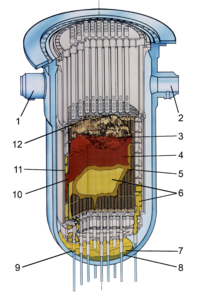
Photo from wikipedia
Ketamine produces fast‐acting antidepressant effects in treatment resistant depression (TRD). Though prior studies report ketamine‐related changes in brain activity in TRD, understanding of ketamine's effect on white matter (WM) microstructure… Click to show full abstract
Ketamine produces fast‐acting antidepressant effects in treatment resistant depression (TRD). Though prior studies report ketamine‐related changes in brain activity in TRD, understanding of ketamine's effect on white matter (WM) microstructure remains limited. We thus sought to examine WM neuroplasticity and associated clinical improvements following serial ketamine infusion (SKI) in TRD. TRD patients (N = 57, 49.12% female, mean age: 39.9) received four intravenous ketamine infusions (0.5 mg/kg) 2–3 days apart. Diffusion‐weighted scans and clinical assessments (Hamilton Depression Rating Scale [HDRS‐17]; Snaith Hamilton Pleasure Scale [SHAPS]) were collected at baseline and 24‐h after SKI. WM measures including the neurite density index (NDI) and orientation dispersion index (ODI) from the neurite orientation dispersion and density imaging (NODDI) model, and fractional anisotropy (FA) from the diffusion tensor model were compared voxelwise pre‐ to post‐SKI after using Tract‐Based Spatial Statistics workflows to align WM tracts across subjects/time. Correlations between change in WM metrics and clinical measures were subsequently assessed. Following SKI, patients showed significant improvements in HDRS‐17 (p‐value = 1.8 E‐17) and SHAPS (p‐value = 1.97 E‐10). NDI significantly decreased in occipitotemporal WM pathways (p < .05, FWER/TFCE corrected). ΔSHAPS significantly correlated with ΔNDI in the left internal capsule and left superior longitudinal fasciculus (r = −0.614, p‐value = 6.24E‐09). No significant changes in ODI or FA were observed. SKI leads to significant changes in the microstructural features of neurites within occipitotemporal tracts, and changes in neurite density within tracts connecting the basal ganglia, thalamus, and cortex relate to improvements in anhedonia. NODDI may be more sensitive for detecting ketamine‐induced WM changes than DTI.
Journal Title: Human Brain Mapping
Year Published: 2023
Link to full text (if available)
Share on Social Media: Sign Up to like & get
recommendations!